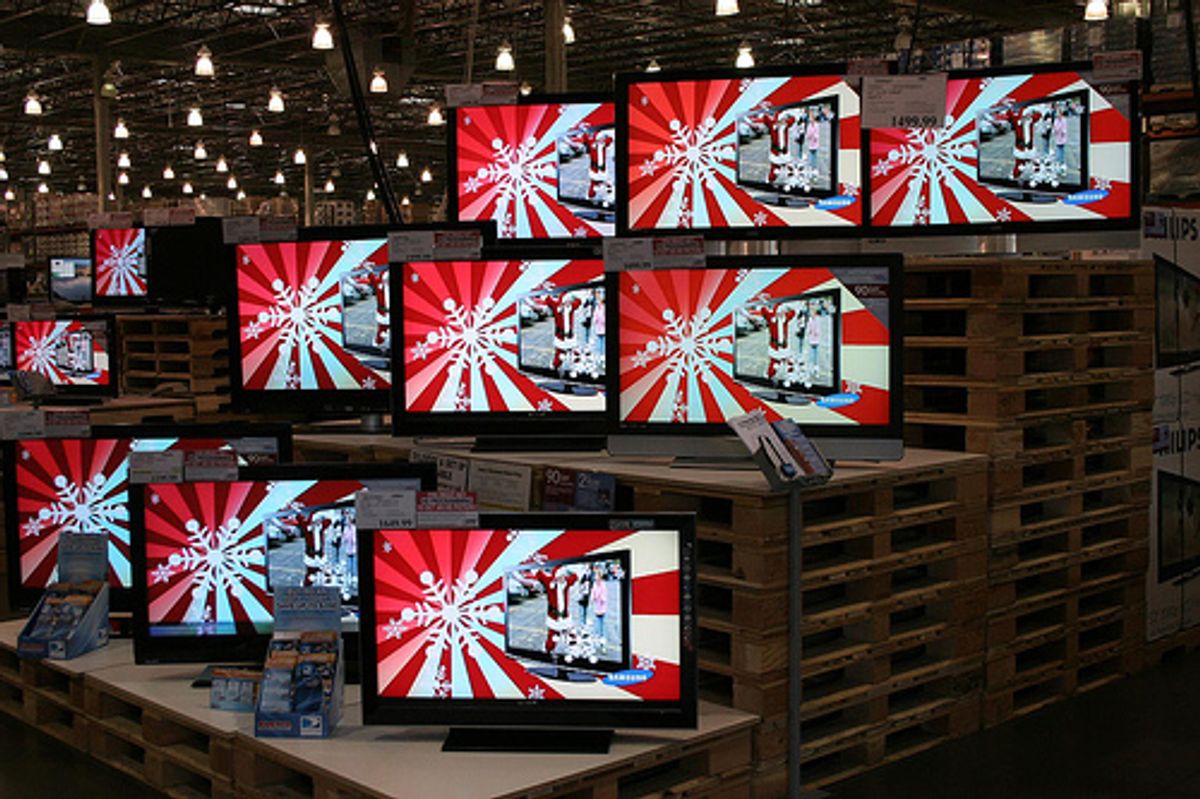Today, the California Energy Commission set energy efficiency standards for televisions, due to go into effect in 2011. According to Pacific Gas & Electric, the standards, which affect TVs with screen sizes 58-inches or smaller, will cut carbon dioxide emissions by three million metric tons over the next ten years and save $8.1 billion in energy costs. Under the standards, a 42-inch television would be limited to consuming 183 watts at most by 2011 and 115 watts by 2013; current Energy Star guidelines, which are voluntary, set 208 watts as a standard for 42-inch TVs. The California regulations will be mandatory; televisions that don’t meet them will not be allowed to be sold in the state. (Some 1000 sets on the market already meet the 2011 standards.)
The Consumer Electronics Association, an organization that represents the manufacturers of consumer electronics products, is vociferously protesting the regulations. The CEA managed to get the commission to delay its decision, originally expected on 4 November, by filing a 91-page brief just moments before the comment period closed. At a conference call with the press today, CEA representatives indicated that they still felt shortchanged by the process, because no changes were made in the proposed regulations as a result of their comments.
While the Energy Commission sees their regulation as saving consumers money in the form of energy costs, as well as having positive effects on the environment, the CEA sees the regulations as all bad.
Take TV prices, for example. The Energy Commission says that, according to their analysis, the regulations will not affect the prices of televisions. The CEA counters that regulation will drive up the purchase price, either because of direct costs of energy saving technology (which the CEA estimates at tens to hundreds of dollars) or because the regulations will force low-tech power-guzzling models off the market. Because these tend to be cheaper units from no-name manufacturers, competitors will then be able to raise prices.
The CEA also argues that besides pushing low-tech TVs out of the market, the regulations will prevent advanced-tech TVs from getting in.
Seth Greenstein, counsel to the CEA, says that whenever a new technology gets introduced, it needs time to be gradually optimized for performance. “If we were still in the world of CRT TVs or DLPs, and you wanted to introduce plasma to marketplace, you couldn’t,” he says.
Greenstein points out that OLED displays are still in development and 3-D televisions are expected to roll out in large numbers this year. The industry relies on sales to early-adopters to fund continued develoment of these technologies—but won’t be able to if new technologies can’t get to market.
“The real risk of the California Energy Commission’s regulation,” says Jason Oxman, the CEA’s Senior Vice President for Industry Affairs, is that there will be innovative technologies “that California consumers won’t be able to enjoy because of CEC regulations, that consumers in 49 other states enjoy.”
Realistically, it’s hard to imagine TV manufacturers ignoring the huge California market; it’s more likely that California regulations will influence the world. That’s a thought that makes the CEA shudder.
Says Doug Johnson, the CEA’s Senior Director of Technology Policy, “We don’t want to take a bad idea and make it a national bad idea.”
The CEA hasn’t revealed its next move—and won’t until it has time to review the complete regulatory documents—but has indicated that it will make every effort to make sure that, in Oxman’s words, “common sense is restored” in California.
Tekla S. Perry is a senior editor at IEEE Spectrum. Based in Palo Alto, Calif., she's been covering the people, companies, and technology that make Silicon Valley a special place for more than 40 years. An IEEE member, she holds a bachelor's degree in journalism from Michigan State University.



